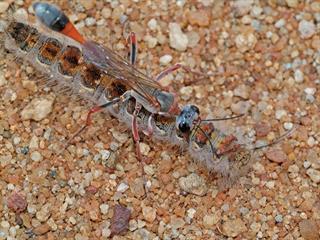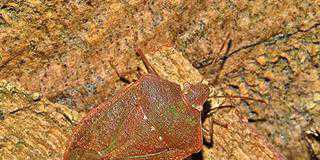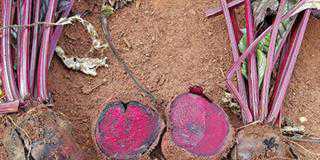
Many farmers think that parasitoids are parasites. This is incorrect. A parasite depends on another organism (a host) for shelter and food, but does not contribute anything to the host’s survival. In most cases (there are exceptions), a parasite does not kill its host.
A parasite can live either in its host (an endoparasite) or on its host (an ectoparasite). Tapeworms and roundworms, which are found in the digestive tract, are examples of endoparasites, whereas fleas and ticks are ectoparasites. A parasitoid, on the other hand, is an organism that spends a significant proportion of its life-cycle inside or attached to the exterior of its host and will eventually kill the host. A parasitoid usually starts consuming its host while the host is still alive and only kills it when it is ready to pupate.
By far the most common parasitoidal insects are wasps, particularly those belonging to the Pompilidae and Eumenidae families, and flies of the Tachinidae, Conopidae, and Pipunculidae families. Representatives of the Tachinidae family are often used in integrated pest management (IPM) programmes to control crop pests.
In addition to these wasps and flies, some species of nematodes, mites, bacteria and viruses, Pteromalid wasps and even plants are parasitoids. Parasitiods attack a huge variety of hosts, from insect eggs, aphids, ants, flies, bugs, through to caterpillars, beetles and spiders. Although many parasitoids are large – some parasitic wasps can be more than 5cm long – the majority are little more than 1mm or 2mm in length.
A remarkable wasp
One of the most extraordinary group of parasitoids belong to the family Trigonalidae. These wasps have a highly specialised way of breeding. The female wasp cuts a slit at the edge of a leaf and deposits her eggs inside. The eggs are then ingested by a caterpillar. Once inside the caterpillar, the eggs hatch and the larvae burrow through the gut wall, seek out other parasitoid larvae and parasitise them. So even parasitoids have parasitoids. These wasps are known as hyperparasitoids.
Plants attracting parasitoids
It might seem that parasitoids simply fly around haphazardly trying to find a host on which to lay their eggs. Although this may be partially true, they often get a helping hand from the plant hosts themselves. Research has shown that certain plants, when under attack from pests, release distress chemicals that attract parasitoids to attack the pests.
Defeating the immune system
Many parasitoids use venom to suppress a host’s immune system, preventing it from killing the parasitoids’ eggs or larvae as foreign bodies. The venom is injected when the egg is laid. As well as suppressing the immune system, it helps to subdue the host and break down its tissue, making it more nutritious for the developing larvae.













